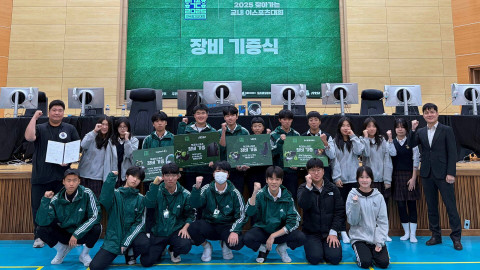
To commemorate the launch of the Vive Pro, HTC’s new VR headset, in South Korea, APAC Sales and Operation Director Mike Chi visited and delivered a keynote speech introducing VR and covering the current state of the market in the Asian Pacific and China on May 31st (KST).
He started off the speech by asking “Do you think that the VR market is facing winter right now?” Chi followed that up by asserting that the market holds greater potential than most people think and is now in the “beginning phase”. Although AR has had significant growth from the years of 2015 to 2016, many investors are putting their money in VR technology as they realized that VR is the basis of AR.

He said that investors make smarter investment decisions as time goes by; they always seek out more prospective investments. While investments in 2015 were heavily focused on gaming and entertainment, they moved on to technology, tools, and hardware in 2017.
Most investments centered around the US and China in the years of 2015 and 2016 according to the investment data by region, but a large portion moved into the Asian region in 2017. This indicates that most investors are spending their money on more prospective areas.
Chi claimed that most investments will be made toward mobile AR, AR glasses, independent VR, high-end PC VR, and 5G technologies within one year. Independent VR and 5G technologies will be the key to these investments, because South Korea is expected to have a 5G infrastructure soon, allowing 5G and related technologies to prosper.


Continuing on, Chi then covered the individual distinctions of the Asian Pacific regions. There are five elements to consider when selling VR devices and related content in each region. This is because each region has unique characteristics.
The five elements are as follows: the number of households, average residential space per capita, GDP per capita, annual household entertainment spending, and annual household consumption. The reason why the number of households should be considered is that one household usually has only one VR device.
If a company focuses on a specific country, it is necessary to check if the GDP per capita is over $20,000. People living in a country with more than $2,000 for annual household entertainment spending are likely to spend more on game consoles and VR content, thus the country becomes a good target.
For example, the number of households in South Korea is half of Japan. The GDP per capita is about the same, but the annual household entertainment spending in Japan is two times greater than Korea’s. This indicates that it would be better to enter the Japanese market should you develop VR content.
Most indicators in Australia, including GDP and annual household entertainment spending, are reasonably high, but the number of households is quite small. However, the residential space is much bigger, allowing for more than 2 VR devices in each household. On the other hand, the spaces in Hong Kong and Singapore are too small that it is not reasonable to have any entertainment devices in the house. In order to enter the markets of these countries, it is appropriate to do so with standalone devices and content like the Vive Focus rather than high-end VR devices that require a vast amount of space.


Mr. Chi then continued by explaining that the Chinese market has been experiencing the most growth in the world. After the year of 2017, China is currently leading the global VR and AR markets.
Although South Korea has a reputation for being the leader in 5G-related technologies, the number of patents that China holds is two times more than South Korea. As the Chinese government and developers are concentrating heavily on 5G and VR technologies, Chi suggested that investors keep knocking on the door of the Chinese market if they have a unique 5G cloud or related services.
Most of the Chinese population are quite fond of spending their money on VR content. When developing for the market in China, however, there are a number of elements you need to take into consideration; first off, they have specific preferences with the VR content for each platform. Even though gaming generally makes up the biggest portion of the available VR content that Chinese people enjoy, this only applies to PC and console VR devices. Current mobile VR is mostly used for watching video content, and Chi advised not to make game content on the mobile VR front.

On top of that, VR is becoming popular in the education industry in China. According to surveys, Chinese parents feel positive about using VR for educational purposes. Chi said that in light of this, anyone developing educational VR content should consider entering the Chinese market.
Mr. Chi emphasized that all technologies including VR, AR, 5G, and AI are core components of the Vive Reality that HTC is currently designing. He then concluded his speech by declaring his determination to make everything in the movie Ready Player One into a reality.
Sort by:
Comments :0







